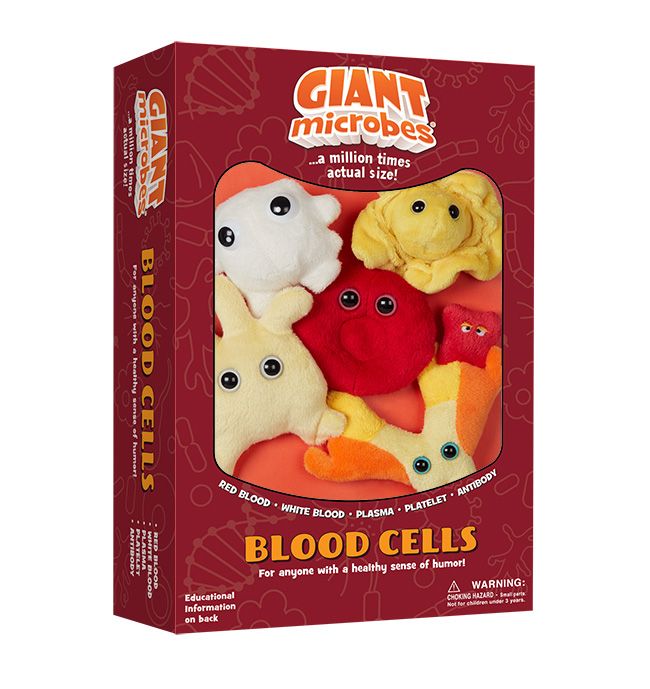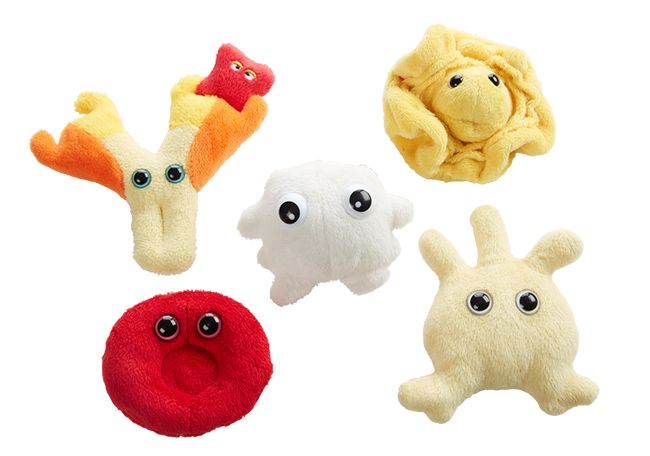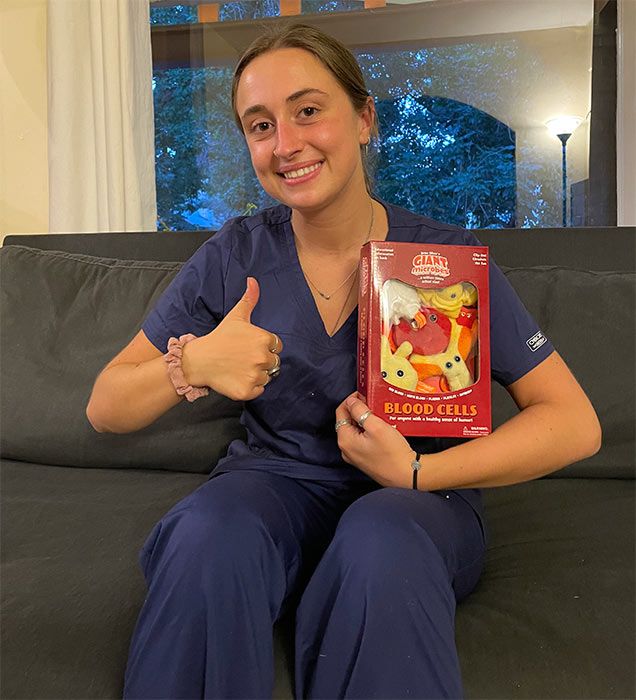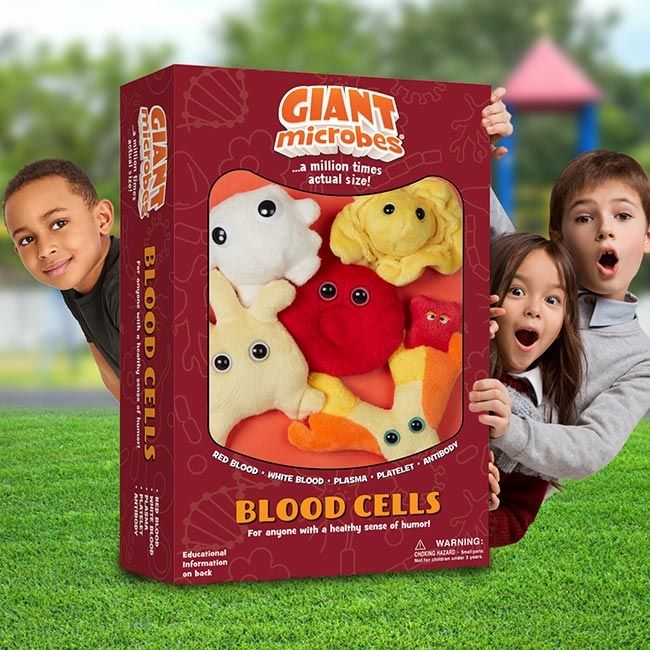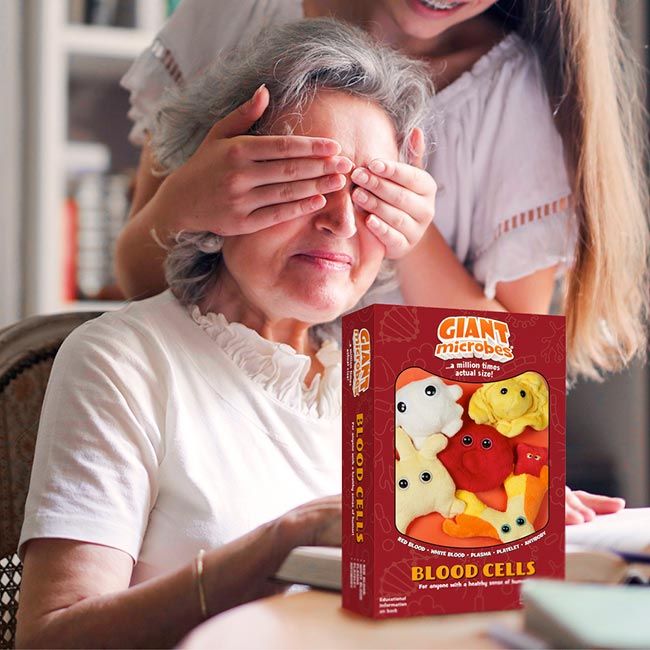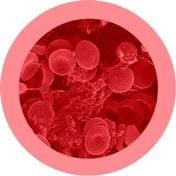Blood Cells
Blood Cells themed gift box includes these mini microbes: Red Blood Cell, White Blood Cell, Plasma, Platelet, and Antibody.
Clip them onto your backpack, keys or anywhere! Includes key chain clips.
Product Details
Additional Information
| Sizes | Giantmicrobes are based on actual microbes, cells, organisms and other critters, only 1,000,000 times actual size! Gigantic (GG) 40-60cm XL (XL) 25-38cm Original (PD) 12-20cm Minis (MM) 5-10cm each Keychain (KC) 5-10cm with clip |
|---|---|
| Materials | Plush from all new materials. Stuffed with polyester fiber fill. Surface washable: sponge with water & soap, air dry. |
| Packaging | Each plush microbe includes a printed card with fun, educational and fascinating facts about the actual microbe or cell. |
| Safety | Every product meets or exceeds U.S. and European standards for safety. For ages 3 and up. |
All about Blood Cells
Red Blood Cell
Red blood cells, or erythrocytes, contain the hemoglobin that carries oxygen and carbon dioxide around the body. (Erythro means red in Greek, and cyte translates to cell.) Hemoglobin gives red blood cells their Characteristic color. When it is oxygen-rich, it appears reddish; when oxygen-poor, it is darker and bluish.
Although erythrocytes are flexible (which permits them to squeeze through capillaries), they typically have a distinctive biconcave shape that helps maximize surface area to facilitate the exchange of gases.
White Blood Cell
White blood cells, or Leukocytes, are your body’s white knights. If an enemy germ invades you, they ride to the rescue and fight to the death.
There are several different kinds of leukocytes, and each has special skills to help protect you. Neutrophils race to the scene when bacteria attack. B cells neutralize viruses and T cells move in for the coup de grâce.
Plasma
Plasma is the pale liquid that makes up about 55% of your blood. The other blood components are suspended in plasma, and it allows them to travel through the blood vessels and around your body!
Plasma itself plays a critical role in carrying waste products to the kidneys, liver, and lungs where they can be removed from the body. Plasma also helps maintain normal blood pressure and helps regulate the body’s temperature.
Platelet
Platelets, or thrombocytes, are the smallest cells (or cell fragments) in the blood. Under the microscope, they normally look like little disks, or plates!
The primary purpose of platelets is to prevent bleeding by creating blood clots, and the average person has between 150,000 to 400,000 platelets in every drop (or microliter) of blood.
Antibody
Antibodies are Y-shaped proteins produced by the body’s immune system to help identify foreign interlopers such as viruses, bacteria, or toxic chemicals.
While the bodies of antibodies come in a few specific types (or isotypes), the tips (or paratopes) can be custom made, like a lock to a key, to attach only to specific parts (or epitopes) of an antigen. There are more than 10 billion combinations to this lock!


